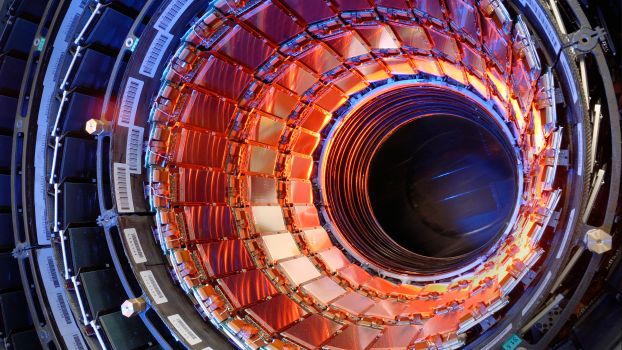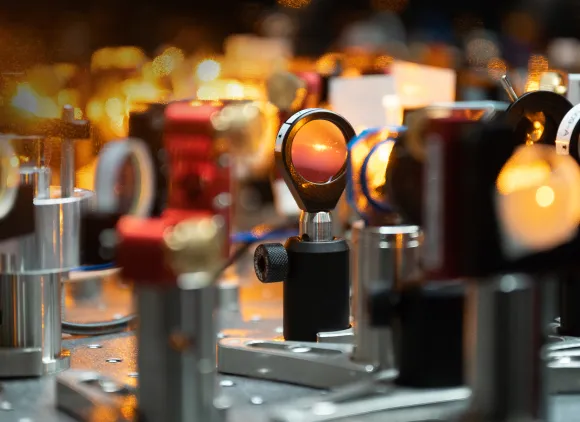The mission of the U.S. National Science Foundation Division of Physics (PHY) is to enable human understanding of the fundamental aspects of nature at all scales, from the quantum-scale effects inside atoms to the mysterious dark energy spanning the entire universe.
The division invests in ambitious research, collaborative centers and unique facilities fostering investigation of previously unexplored aspects of nature, including invisible gravitational waves, elusive neutrino particles and seemingly paradoxical quantum-scale phenomena.
The division also prioritizes education and workforce development by supporting training opportunities in labs and facilities across the U.S. These opportunities allow more students, early-career researchers and others to get involved with cutting-edge physics research and become leaders in America's future science, technology, engineering and mathematics workforce.

 On this page
On this page
What we support
The division supports a broad portfolio of research programs supporting individuals and small groups, interdisciplinary centers and institutes, multi-user facilities and educational workforce development activities.

Research facilities and institutes
PHY supports several facilities that provide access to unique instruments and technology to enable some of the most ambitious scientific investigations. The division also supports an NSF National Artificial Intelligence Research Institute.

NSF Physics Frontiers Centers
The NSF Physics Frontiers Centers bring together large teams of researchers to produce boundary-breaking results. Such work requires years of concentrated effort, a range of scientific and technical expertise and new types of equipment.

Workforce development and broadening participation
The division supports the training and growth of the U.S. STEM workforce through outreach and education programs for students, early-career researchers and others, including communities and geographic areas that are underrepresented in physics research.
Core research programs
- Atomic, Molecular and Optical Physics - Experiment: Supports experimental research on the fundamental quantitative understanding of atoms and molecules; their interactions with each other and with light; and the application of atomic, molecular and optical methods to fundamental science in some other areas of physics.
- Atomic, Molecular and Optical Physics - Theory: Supports theoretical and computational studies of atomic and molecular structure; atomic and molecular interactions, including collisions and photoionization; quantum optics; quantum information and ultracold phenomena in Bose and Fermi gasses.
- Elementary Particle Physics - Experiment: Supports laboratory research that explores the fundamental building blocks of matter and their forces by directly or indirectly probing particle interactions.
- Elementary Particle Physics - Theory: Supports research across all domains of theoretical high-energy physics, including collider physics, standard-model physics and physics beyond the standard model, including supersymmetry, extra dimensions, string phenomenology and string theory.
- Gravitational Physics - Experiments and Data Analysis: Supports research and infrastructure activities focused on gravitation at large and small scales as well as data analysis for gravitational wave detectors.
- Gravitational Physics - Theory: Supports research and infrastructure activities in classical and quantum gravity theory.
- LIGO Research Support: Supports instrumentation development at the Laser Interferometer Gravitational-Wave Observatory, including instrument science, detector characterization and the development of technologies for future generations of gravitational-wave detectors.
- Nuclear Physics - Experiment: Supports experimental research at the frontiers of nuclear physics in the areas of nuclear astrophysics, structure and reactions; nuclear and hadron quantum chromodynamics; and precision measurements of fundamental symmetries and constants.
- Nuclear Physics - Theory: Supports research on fundamental theoretical aspects of nuclear physics, model building and applications to astrophysical phenomena and experimental programs at particle accelerator facilities.
- Particle Astrophysics - Experiment: Supports research on the fundamental nature of matter, energy, space and time in the following areas: cosmic phenomena, underground physics and NSF IceCube Neutrino Observatory research support.
- Particle Astrophysics and Cosmology - Theory: Supports research in theoretical cosmology, including standard Big-Bang cosmology and alternative cosmologies motivated by new ideas in particle physics. Also supports theoretical particle astrophysics, which tests ideas for physics beyond the standard model.
- Physics of Living Systems: Supports theoretical and experimental research that explores the fundamental physical processes used by living systems, with a focus on basic physical principles that underlie biological function.
- Plasma Physics: Supports research in fundamental plasma physics including study of magnetized plasmas, high-energy-density plasmas, low temperature plasmas, strongly coupled plasmas, non-neutral plasmas and intense field-matter interaction in plasmas.
- Quantum Information Science: Supports theoretical and experimental research to advance foundational understanding and enable quantum technologies with potential for quantum advantage. Supported work may be in the areas of physics, mathematics or computer science.
Who we are
PHY is composed of both federal employees and scientists from research institutions in temporary positions with a wide range of expertise.
Stay connected
Subscribe to MPS email updates
Be notified of the latest news, funding opportunities and events from MPS.
PHY news and announcements
Keep up with the latest award announcements and research highlights.
Attend virtual office hours and webinars
Talk directly with PHY program directors and learn how to submit a proposal.
Find funding and contact a program director
Search for PHY programs and funding opportunities and find contact information for program directors. See also 5 tips on how to work with an NSF program officer.

